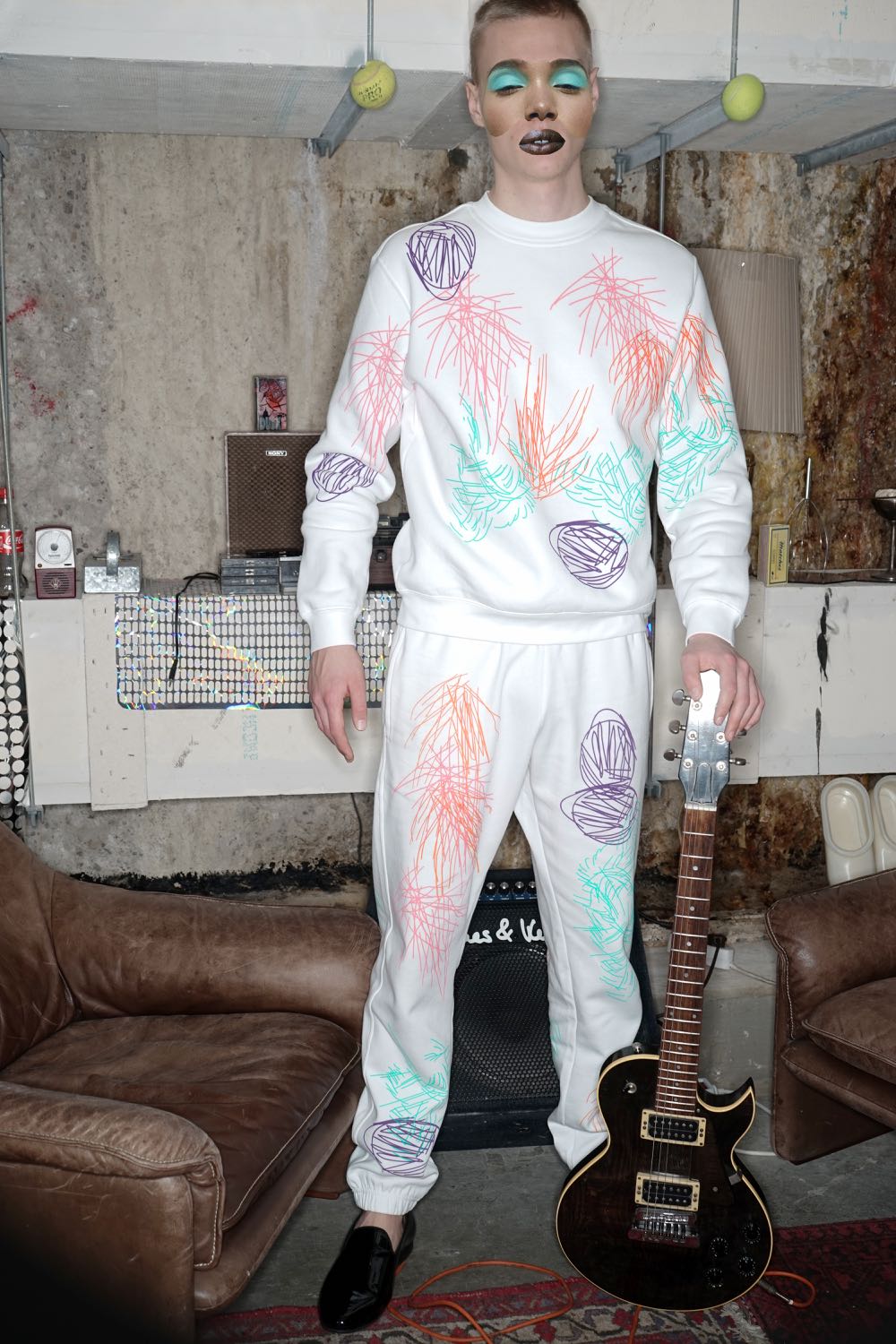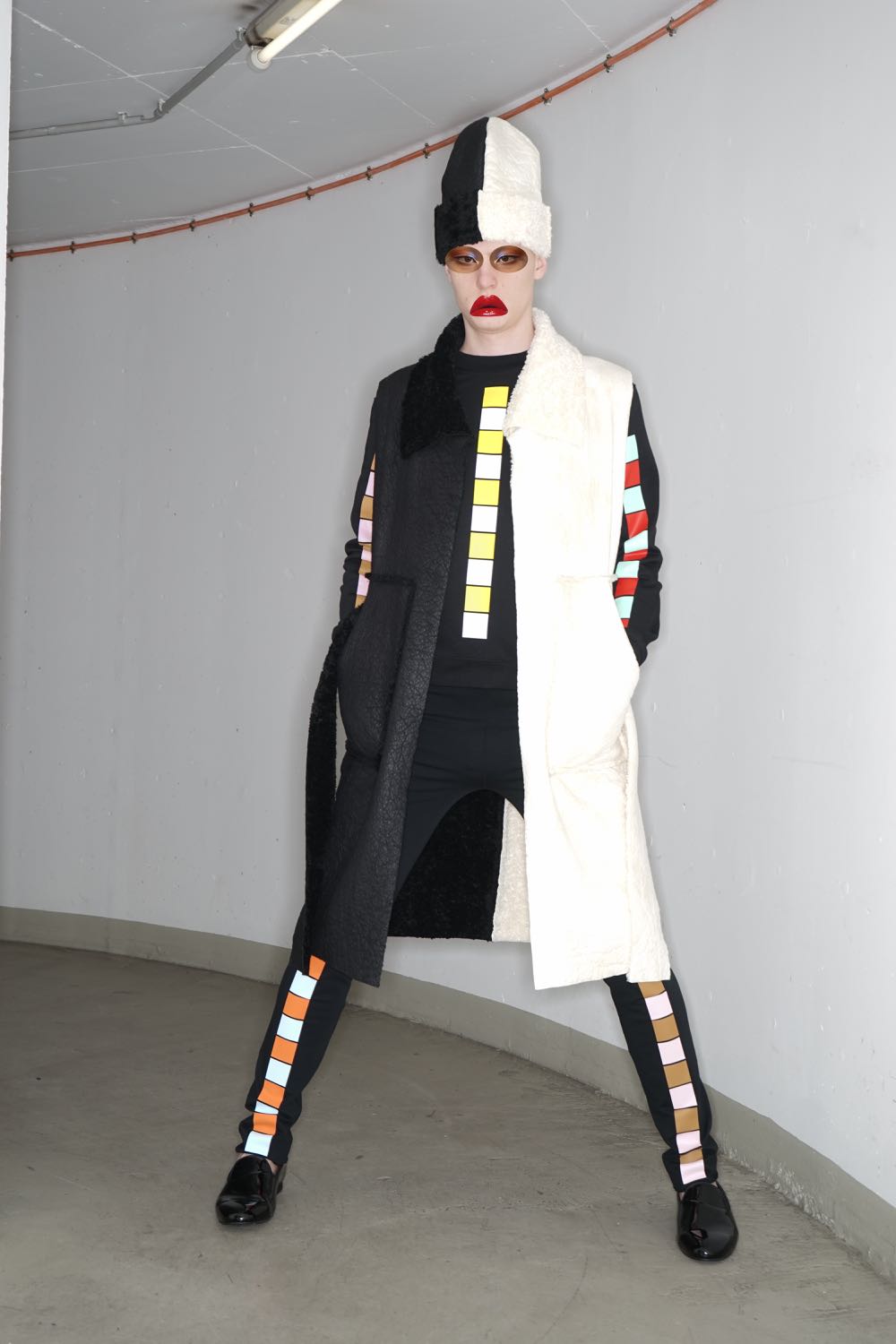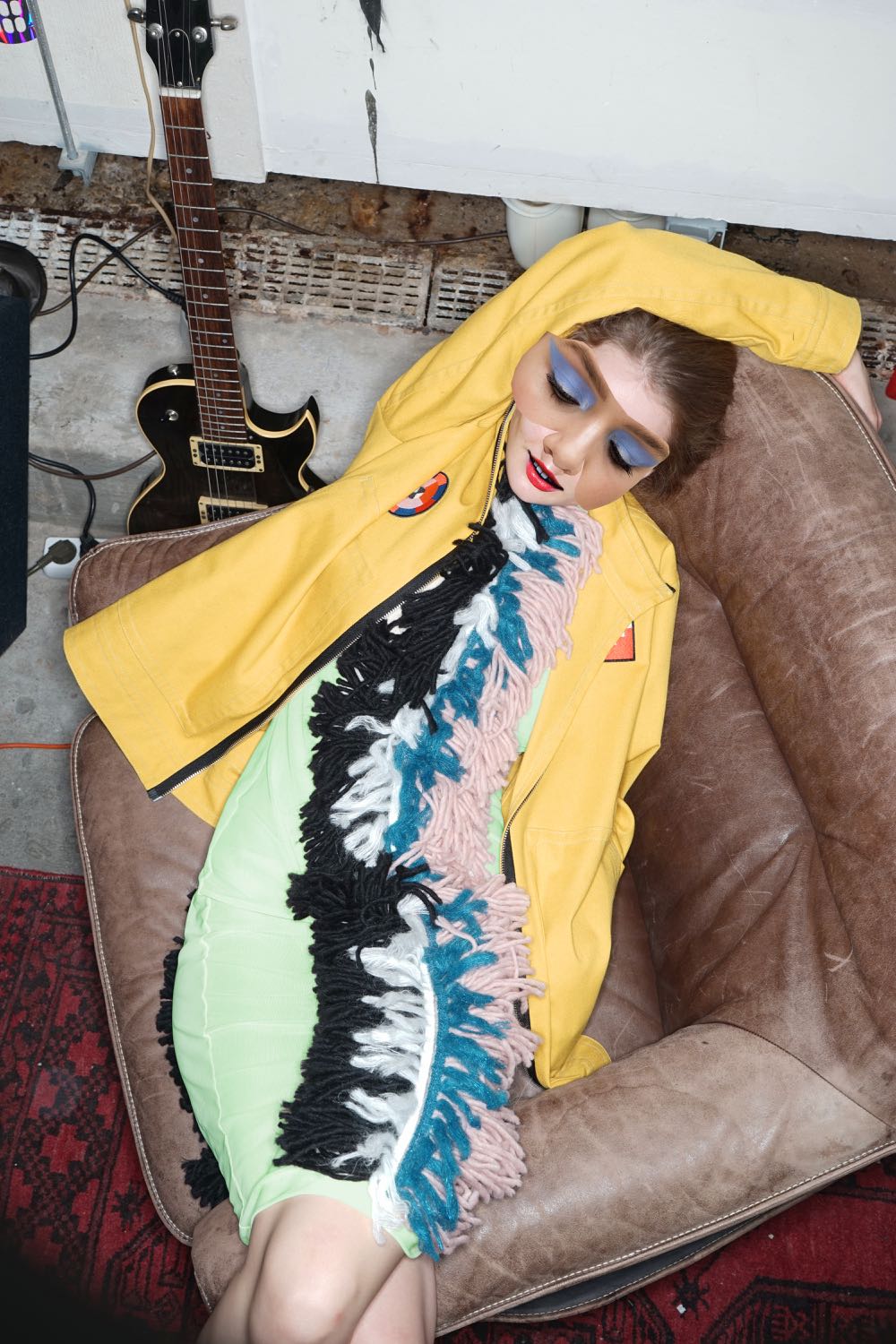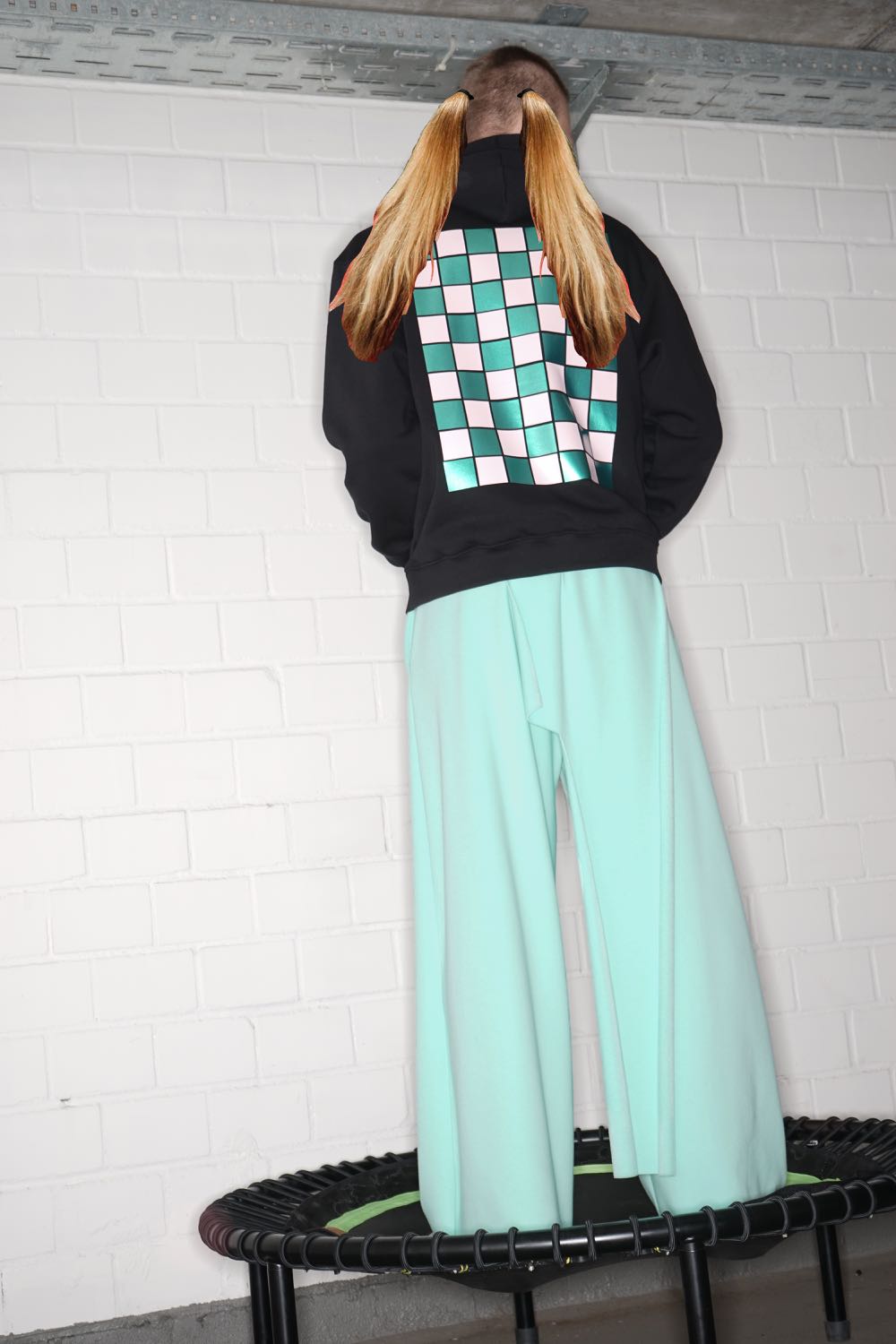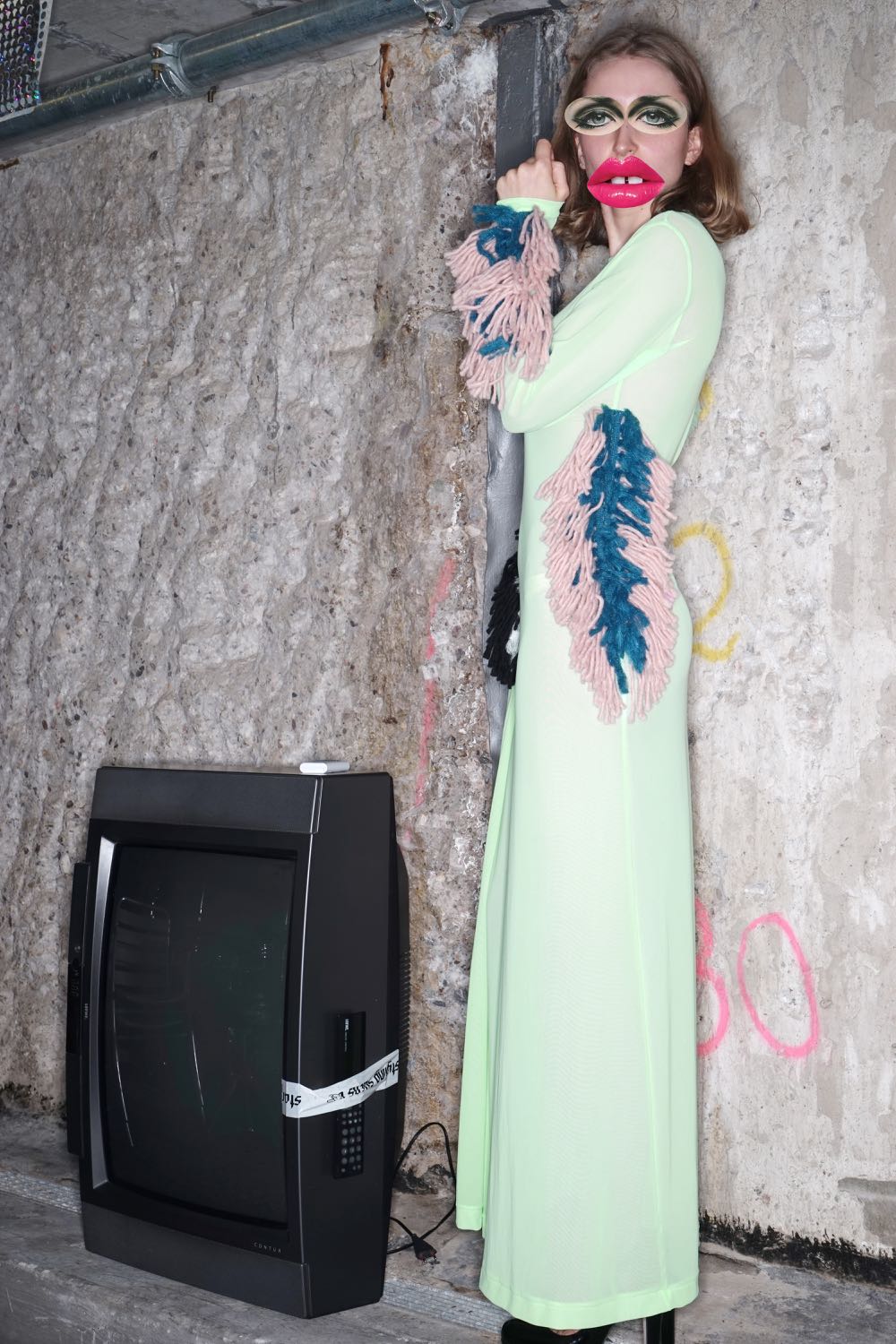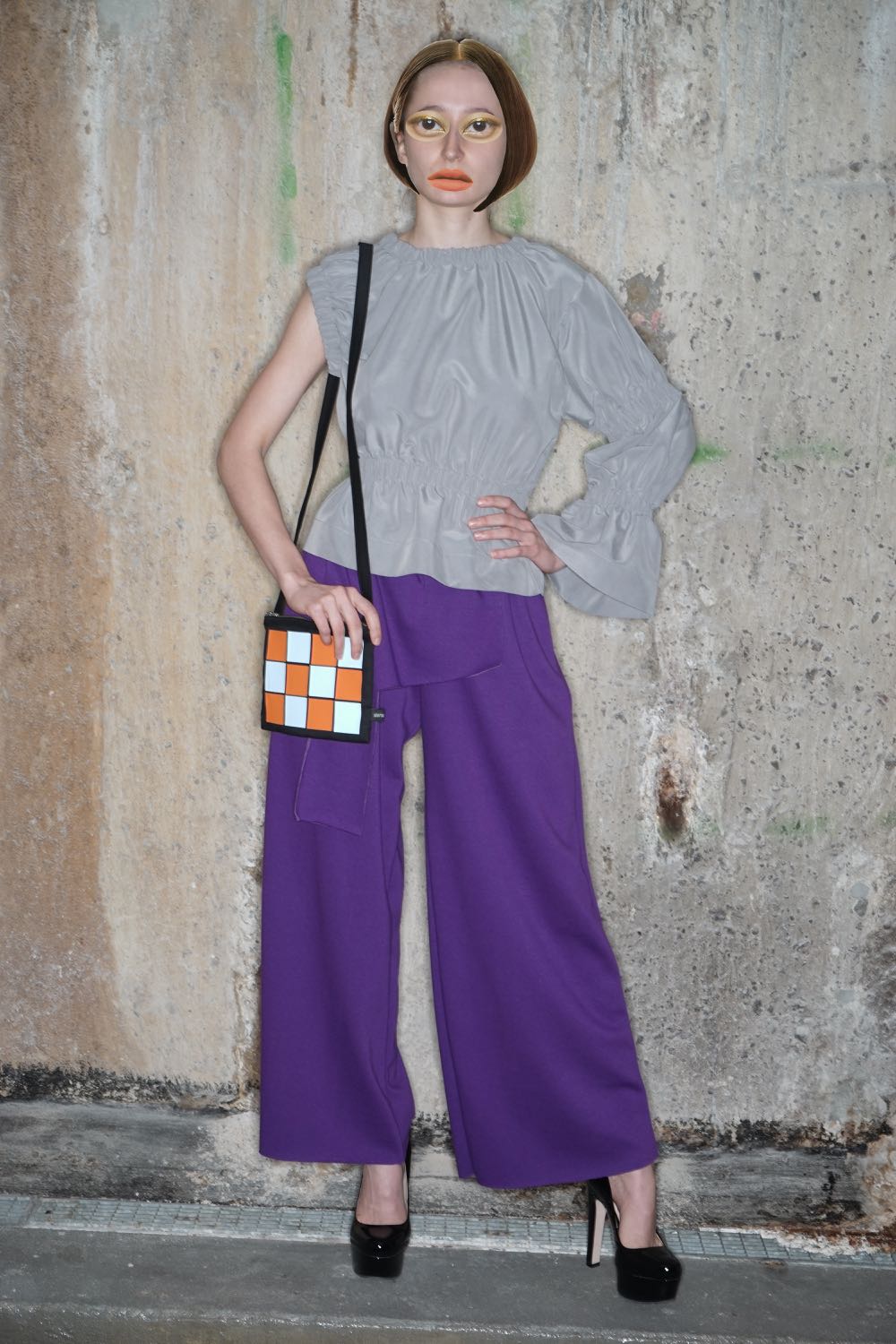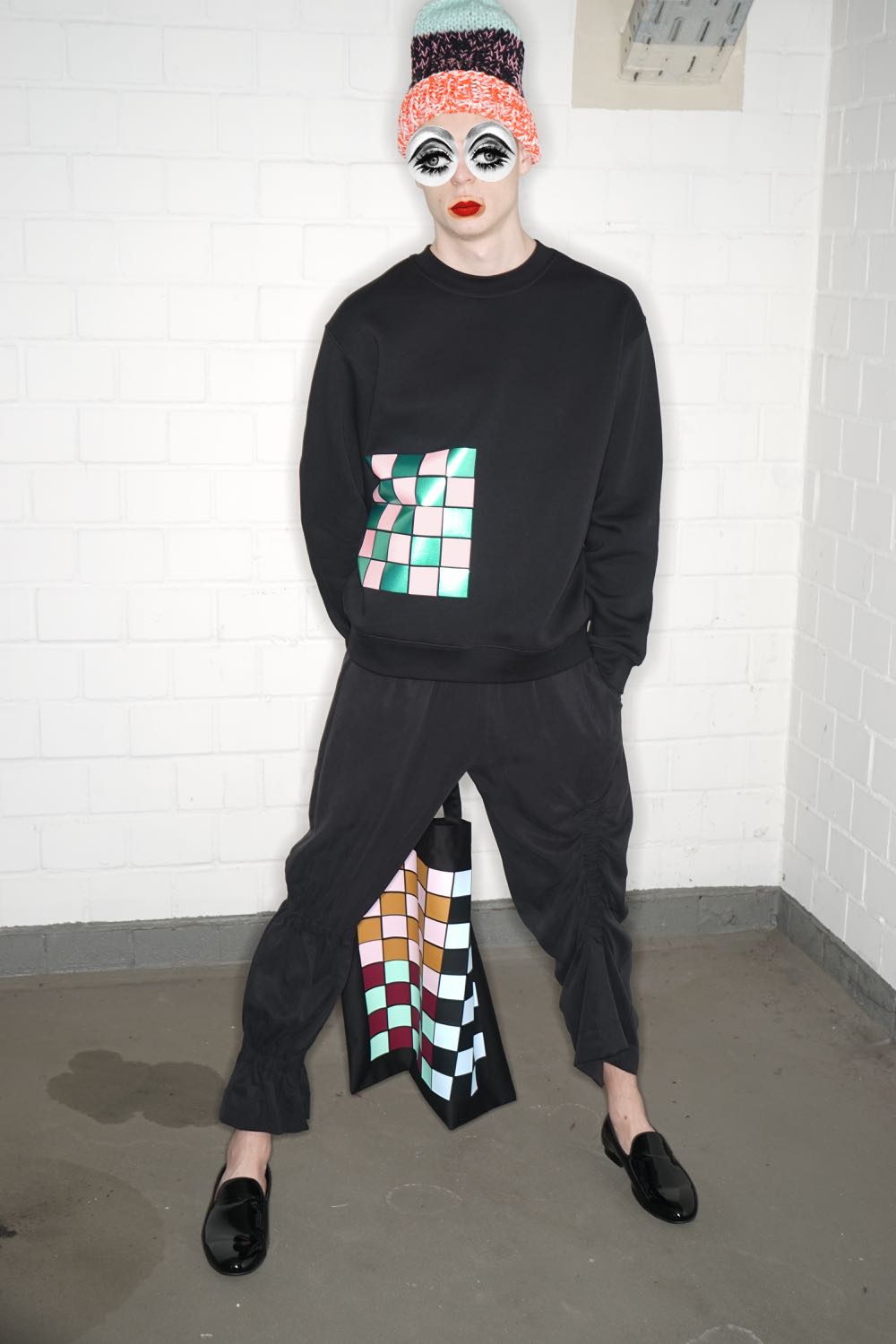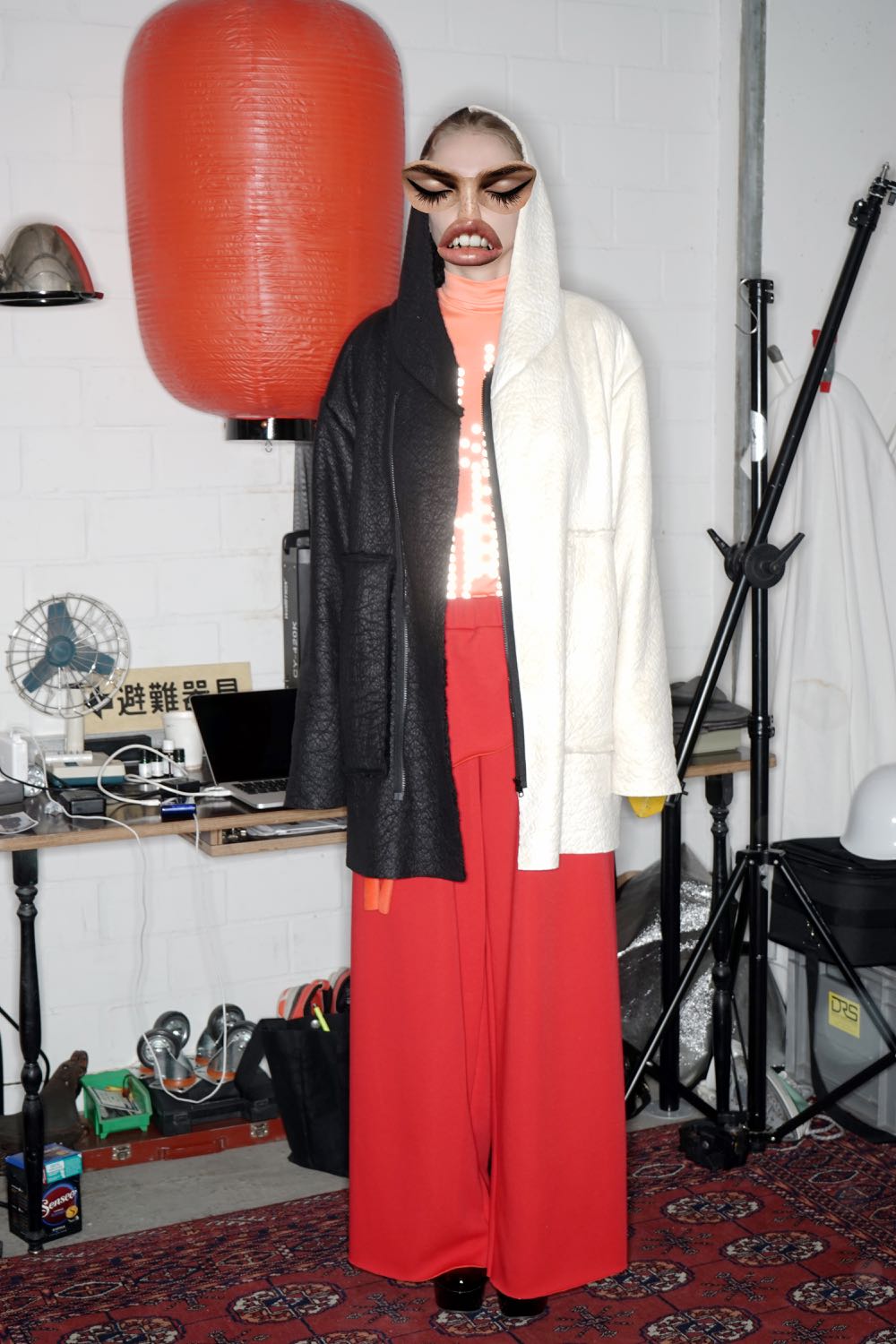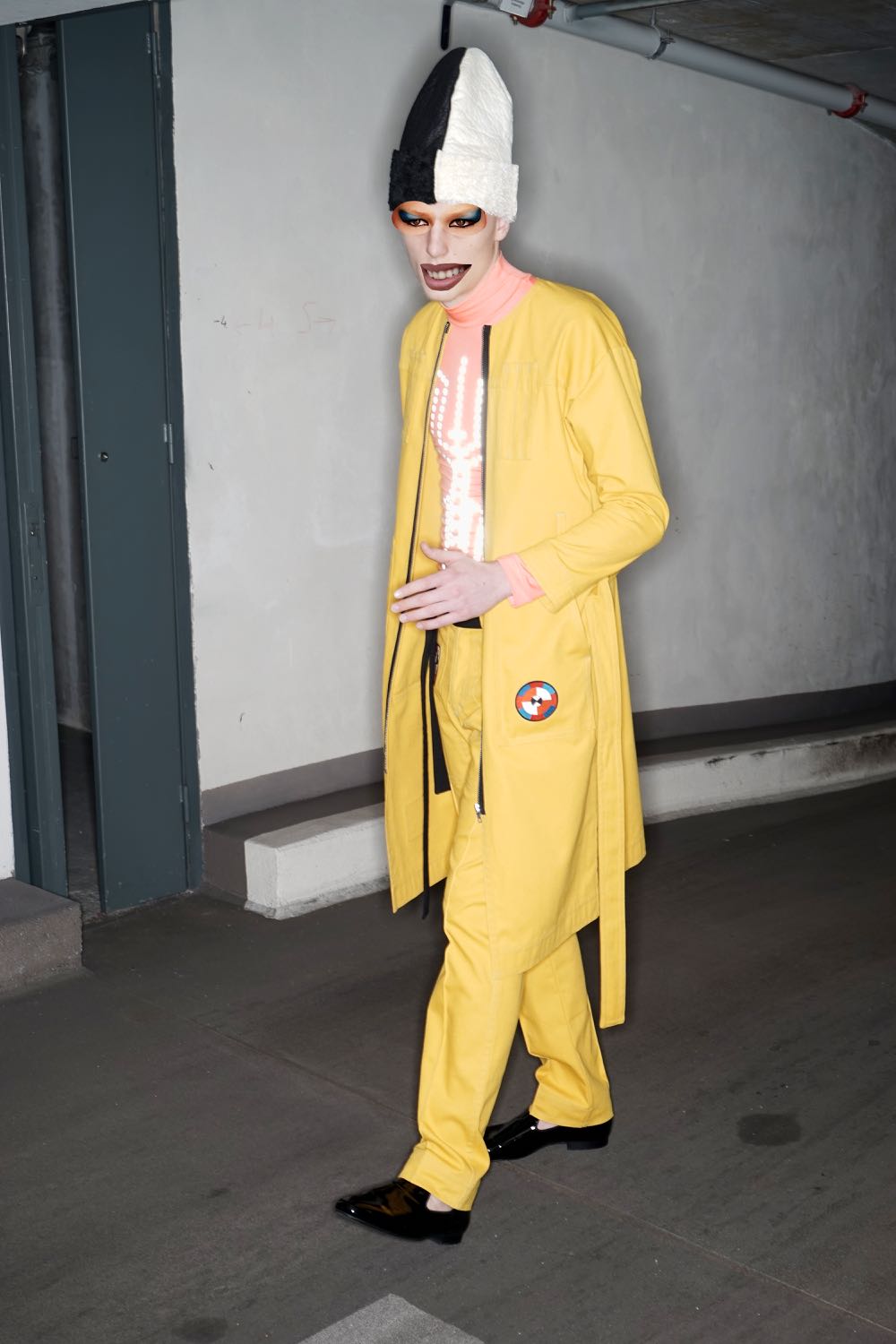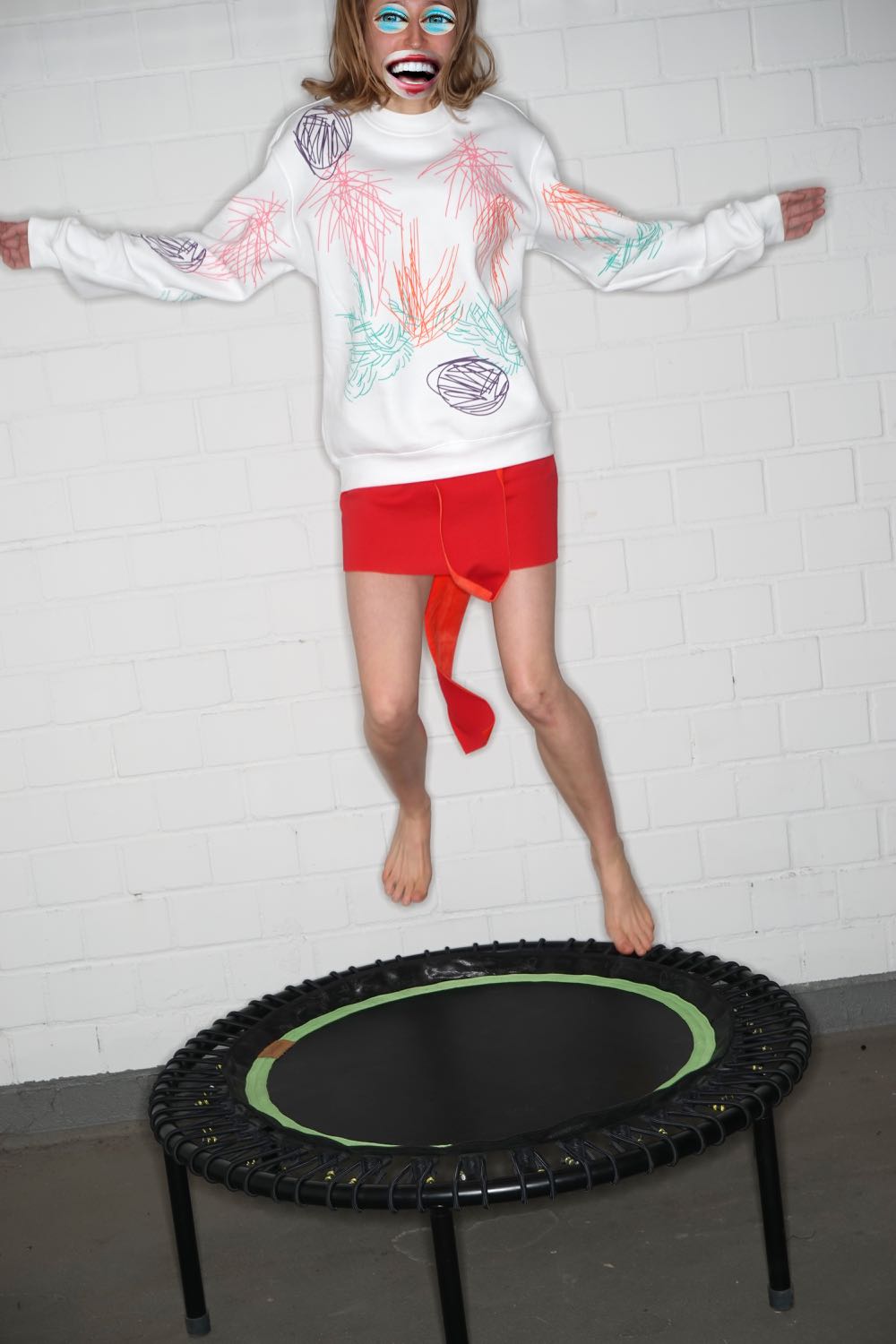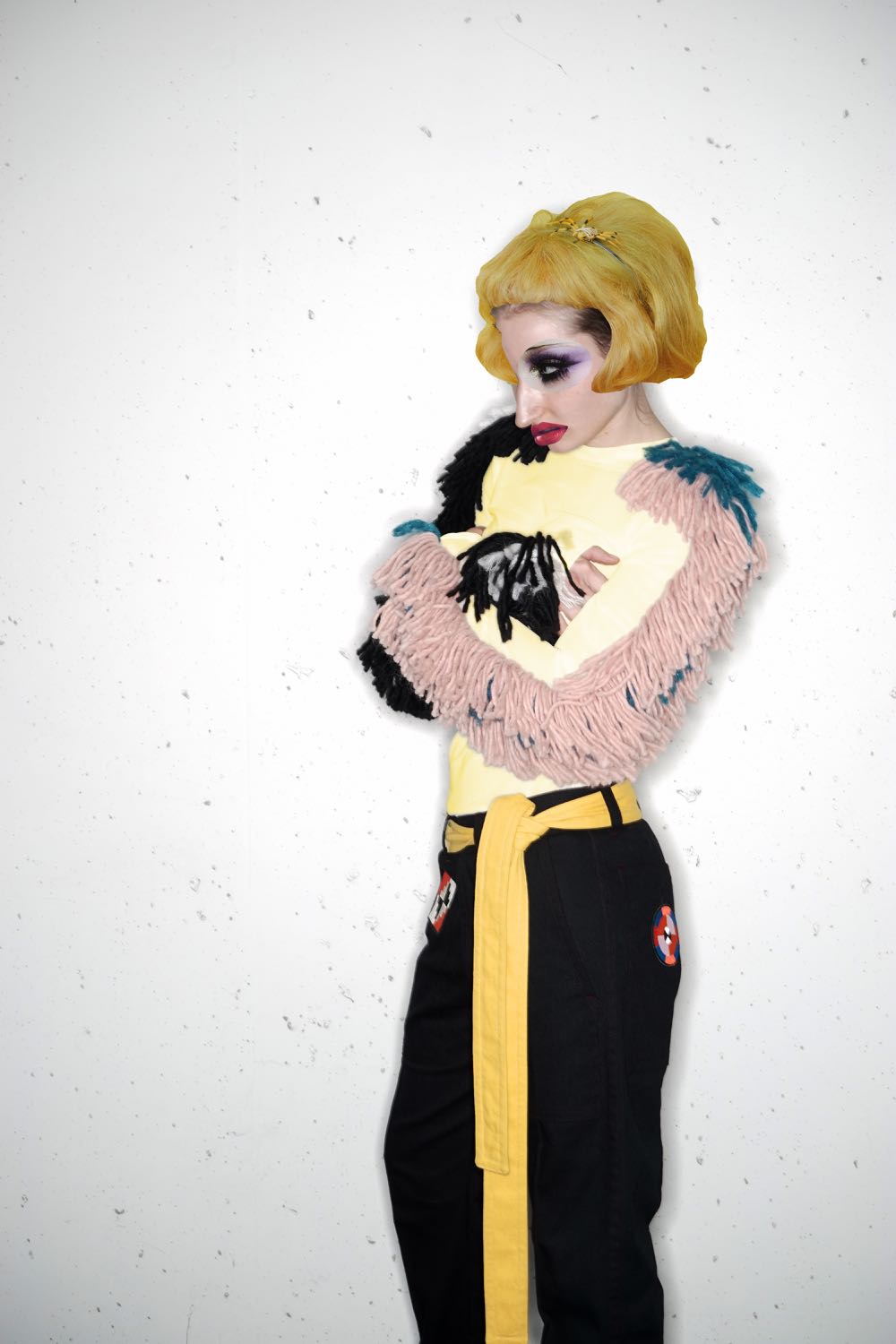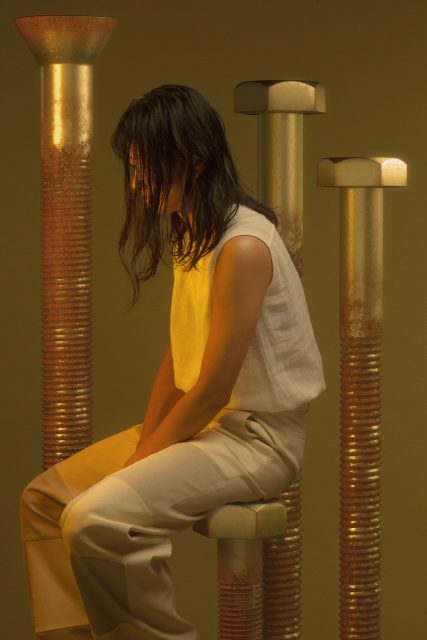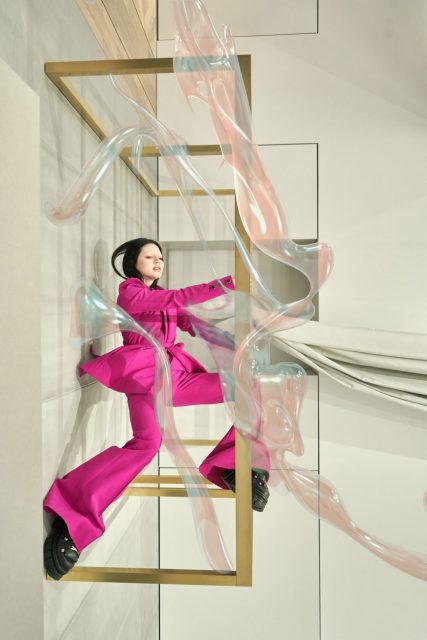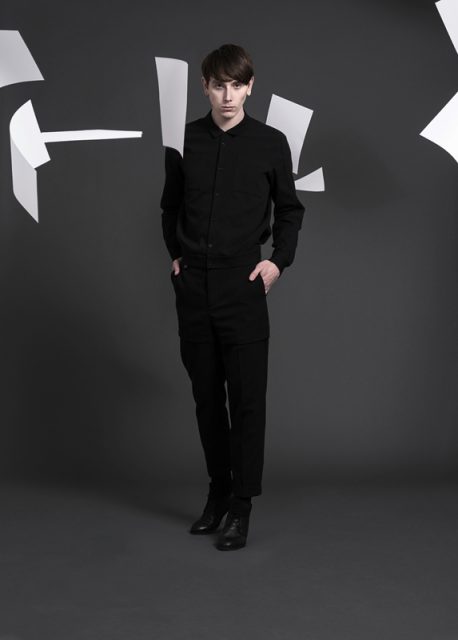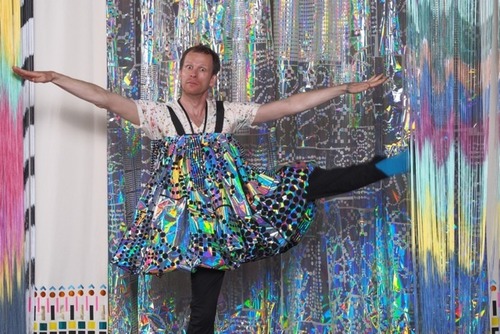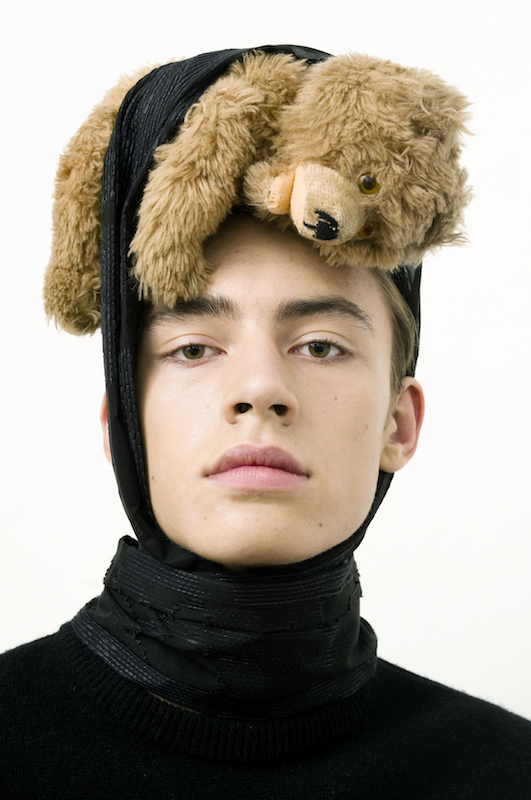For 17 years Starstyling has spoken to fashion souls around the globe, carrying its message of sartorial freedom and reaching out to those unafraid to dress aloud. And having survived nearly a decade of Berlin’s minimalist affinity, the brand is stronger than ever, proving that in our sea of pared down monochromatic wardrobes, there is always room and need for color, humor and risk.
This season, we’ve revisited one of the city’s more established brands and spoken to designer Katja Schlegel about Starstyling’s design vision and artistic journey.
How would you describe the philosophy of Starstyling?
It is a lot about colours, easy shapes and slogans. It is about the remembering of your childhood – to get caught by the glitter, the holographic and the magic.
You actually worked in the art department and as a stylist, is that the reason why your designs are more artistic?
Yes, it comes from the styling I did before, because as a stylist there is always something missing you can’t find in shops or in the press agencies, like a certain colour spot you’d need. In the beginning I created bracelets and little cuffs and that’s where it all started.
Is that also the origin of the variety of colours and patterns you are using?
No it’s actually not coming from there. I was always interested in art, graphic design and typography. For a long time I was really hooked on Egypt and the Romans. I was growing up in a town with a huge baroque castle that I really liked. I was always into history, also with the clothes and therefore with the colours, the techniques and the shapes. But for a long time I didn’t see myself as a fashion designer, it was just a topic that I was interested in. At some point I just did it.
Can you name three words, which describe your brand?
Graphic, colour and magic.
Is art and fun an important goal for you?
Yes sure! Following the slogan, “don’t take it too serious.” It always has to be something special. Nowadays a lot of things seem to be a little bit empty and flat. I am always trying to go into depth with the approach that something reacts inside of you when you see the designs.
You mean empty and flat concerning the designs or society?
Concerning the clothes. I mean facile, stupid prints. No one needs that. Of course sometimes you need a plain white shirt to complete a look, but that’s a classic thing.
Would you say that your designs are futuristic?
No not really, I would rather say they are more archetypes. Simple and basic things we are all hooked on, like squares, circles and simple graphic shapes and we are just playing with it, also with strong colours. Actually, they are really simple things—you’ve seen everything that we design on the market, but maybe not necessarily in this mixture. It’s a new point of view.
Would you consider your clothes as basics?
Most of them. We are doing collections where not all of our clothes are basics, but we hold on to the simple shirt. For me it is a white sheet of paper where I can draw on and tell a story with. The sweater is something everyone is wearing or loving, but there is always room for crazy designs.
When you say you ‘tell a story’ during the process, is there always something in your mind you want to tell?
Not always. Sometimes I have a person in my mind or just a feeling, like a flowery lightweight one, but in most cases it is just coming through me and I don’t want to think too much. I would say that I am more a ‘doing person’ rather than a ‘thinking person’.
Which materials do you like the most or use the most?
For sure jersey and sweater material. With every season I try to get over one fabric I don’t like at all, for example, linen. I hate linen as a fabric and I hate the optics of it. So I am trying to work with linen, to get over this ‘hate’ (laughs).
That is a great way to get over something! So how do you decide on the symbols and pattern you are using for your clothes?
I am trying out some things and then it’s developing in a way. I always have to check if it’s economical and producible. I start in a really easy and basic way: I take a brush and a colour and just try it out. I’ve always had really fast results. I design something and then I plot it, then I see if it’s working or if it’s has to be bigger or smaller. That is a really fast process and I like that. I am not a person who is working two weeks on one piece, not at all. It has to be quick.
I totally agree, I prefer it the same way! So your latest collection is called ‘Harmontrast’. What was the source of inspiration for it?
The square divided into squares and also colour combinations, which stay in a contrast. So it is really like the title says, it is about harmony and contrast. For me, harmony and contrast is the same. I am always into black and white, because it grounds everything. You can use every colour if you have a natural background like white or black. So if you have these two colours in a collection it’s not only good for selling, but also for playing with other colours.
Do you watch out for new trends?
I am surfing in the internet sure, but I don’t really visit blogs. I am informed what other designers are doing, but at the end something totally different comes up. I am not serving trends. The clothes in our shop, which are selling really well, are always two seasons behind. Unlike the new collection, the new one is not selling well when it’s new on the market, but after two years the people ask, “You had this two years ago, can I still have it?” So it is always two years forward and I have no idea why.
Do you like the Berlin fashion scene?
Not really. It is so diametrical for what Berlin is famous for and for what it really is. The city is famous for the night scene and it looks like the city is brimming of creativity, but in reality it’s not really like that. Berlin designers are more basic and a little bit boring. In Berlin there is no history of textile industry or the ‘know how’ and handicraft. We don’t really have an infrastructure for it. You don’t study fashion design in Berlin, you rather go to London or Antwerp. You are selling clothes in Paris, not in Berlin.
Would you say you fit in the scene with your designs?
Yes I guess. I don’t care too much.
If you could change something about the Berlin fashion scene what would it be?
Good question. Maybe more help from the state itself. Because in other countries like in England or Belgium the economy really features the designer. I would say that in the case of the designers it is important to be yourself and to be original. You have to be very, very passionate about it. It’s not at all about the money. I am working more than years before and I am earning less money. It is all about passion.
What are the specific things you keep in mind when designing clothes?
There are some points I have to think about like the costs and the measurement. For the Asian market we need to have bigger neck holes, because they have bigger heads. Besides this you can’t use every colour for every market, but the more I think about things like that, I start to get worse.
Is Asia a big market for your brand? And if so, which are the typical shapes and colours for them?
Yes it is. No brown, because they say it’s not suiting to their skin colour. Japan for example doesn’t like indigo blue fabrics. That is the colour of their work clothing. If you use the colour anyway, you have to put something extreme on top, so it loses the original meaning. It is really interesting and somehow it’s like traveling – you see things you never thought of before.
Do you have a type of person or a group of people in mind when you create a new collection?
Sometimes yes, sometimes no. We have a fitting model, she was a former school intern and we have known her for ten years now. Everything on her looks beautiful and that is really inspiring. Somehow she is my muse. Sometimes we do shirts for DJs, that’s when I am getting into the music of the DJ and think about the feeling which is transmitted in the club and which colours I could use for it. Sometimes I am sliding into a different situation and that is inspiring as well.
How would you describe the people who buy your clothes? Is there a specific type?
Not at all. The buyers are very different, from really young, because of the kid’s clothes, to really old people. We have artists as well as normal people and all of them are interested people. They dare something and they are fascinated. In a way they are exploring their childishness inside throughout our designs. When I am wearing jogging pants with a print on, I am wondering why people stare at me, then I realise that they look at me because of my pants. For me it’s totally normal, but I can understand if this impact is not for everyone. I think there are more people who have fun looking at our clothes than actually wearing it.
Your brand was founded in 2000, now 17 years later, would you say that you changed your style a lot or did you constantly follow the same philosophy behind it?
I think we made a big journey, but we are always coming back to the basics. A friend of mine said some weeks ago,”Oh Schlegel, please go back to the starting point, because it was much more ironic!” I guess now we are more economic and market orientated. At the moment we are a little bit changing, we do less collections and more of the single items, as we did in the beginning. I am more interested in those single items, instead of thinking about a whole collection.
Could you imagine doing a collection just with colours and without the prints on it? Or is that not Starstyling anymore?
I personally would try it out and I think I could find a way to express Starstyling without the prints.
I bet! Can you say what you love the most about your job?
I love everything at it. It’s hard to say, sometimes I am sitting at work just thinking, “I have the luckiest life ever, because I can do what I really want to.” It still is fun and I am really happy about it and also seeing other people being happy when they buy our clothes is great. The feedback makes me happy.
What are you currently working on?
We have two little projects going on right now and of course the new collection, but I don’t want to say ‘collection’ anymore, rather the next bunch of clothes (laughs).
Bunch of clothes sounds perfect! (Laughs)
